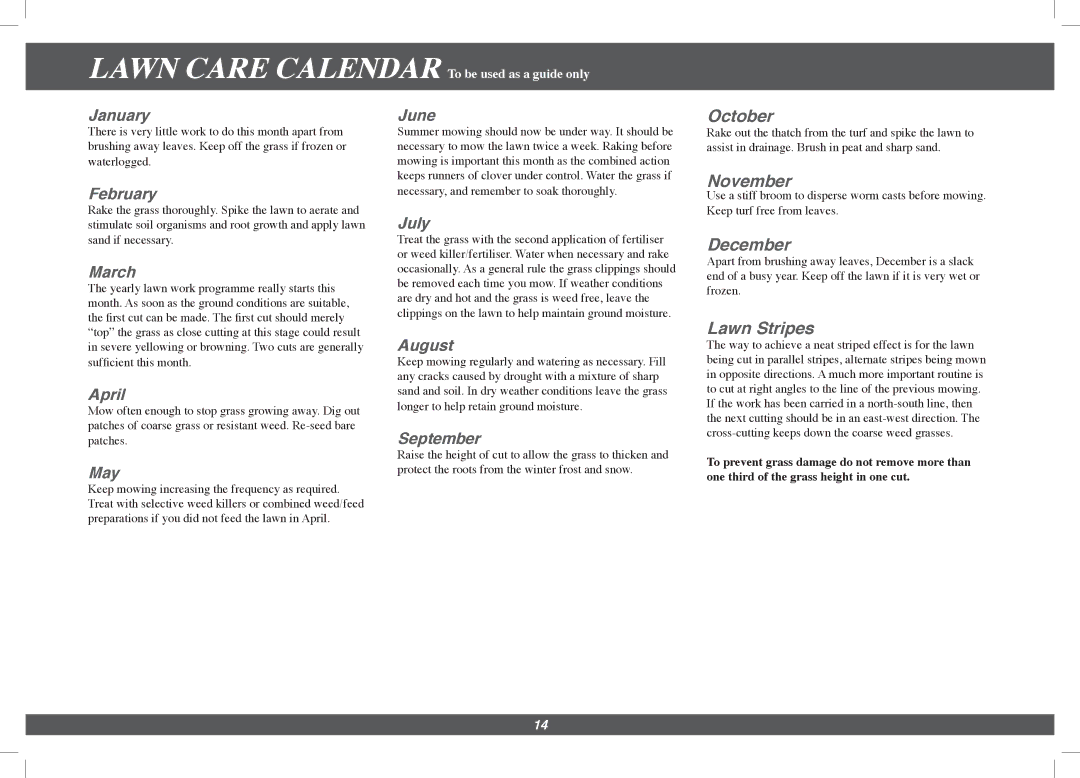563F, 493F specifications
Hayter Mowers has established itself as a prominent name in the lawn care industry, known for its commitment to quality and innovation. Among its range of advanced mowers, the Hayter 493F and 563F stand out, offering unique features and technological advancements that cater to both professional landscapers and home gardeners.The Hayter 493F is a versatile and powerful mower equipped to handle a variety of mowing conditions. One of its standout features is the efficient 48 cm cutting deck, which allows for a wide cutting path while maintaining exceptional maneuverability. This makes it ideal for medium to large-sized lawns. The 493F comes with a robust 4-stroke engine, ensuring reliability and consistent performance. Furthermore, its adjustable cutting heights allow users to tailor the grass length to their preferences, promoting healthier lawn growth.
Similarly, the 563F model enhances the mowing experience with its 53 cm cutting deck, providing increased coverage and efficiency in larger areas. This model is designed for durability, featuring a durable steel chassis that can withstand the rigors of frequent use. The advanced hydrostatic transmission on the 563F offers seamless speed control, allowing users to adjust their pace effortlessly, whether navigating around tight corners or covering open ground.
Both models are equipped with Hayter’s unique Smart technology, which includes an intuitive control system designed for ease of use. The ergonomic handles are adjustable, providing comfort during prolonged mowing sessions. Additionally, the mowers feature a large-capacity grass collector, which minimizes the need for frequent emptying and allows for extended mowing periods.
Safety is another key element incorporated into both models. The mowers come equipped with a safety brake mechanism that quickly halts the blades when the user releases the handle. This feature significantly reduces the risk of accidents, making it suitable for amateur and professional users alike.
Overall, the Hayter Mowers 493F and 563F combine robust construction, user-friendly features, and advanced technology, making them excellent choices for anyone seeking efficient and enjoyable lawn care solutions. Whether tackling residential lawns or professional landscaping projects, these mowers provide reliability and performance that stands the test of time.

